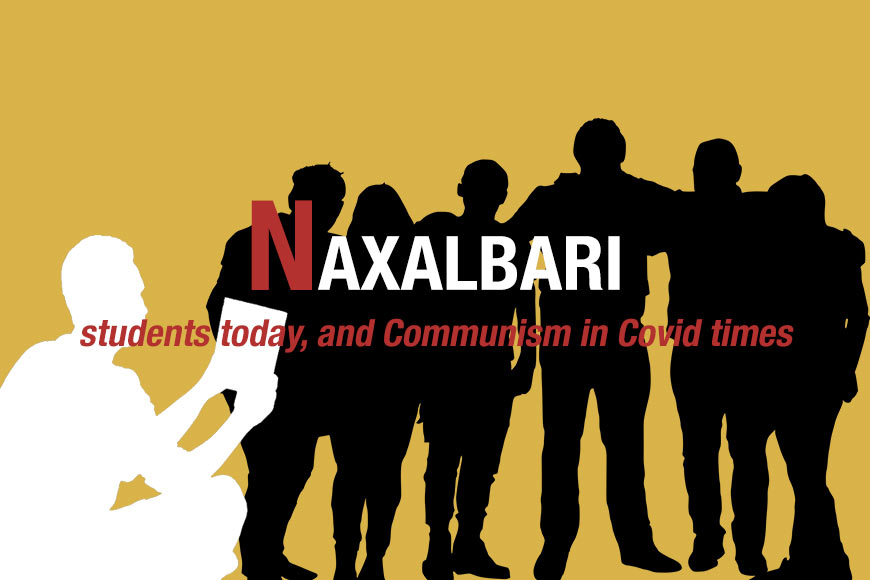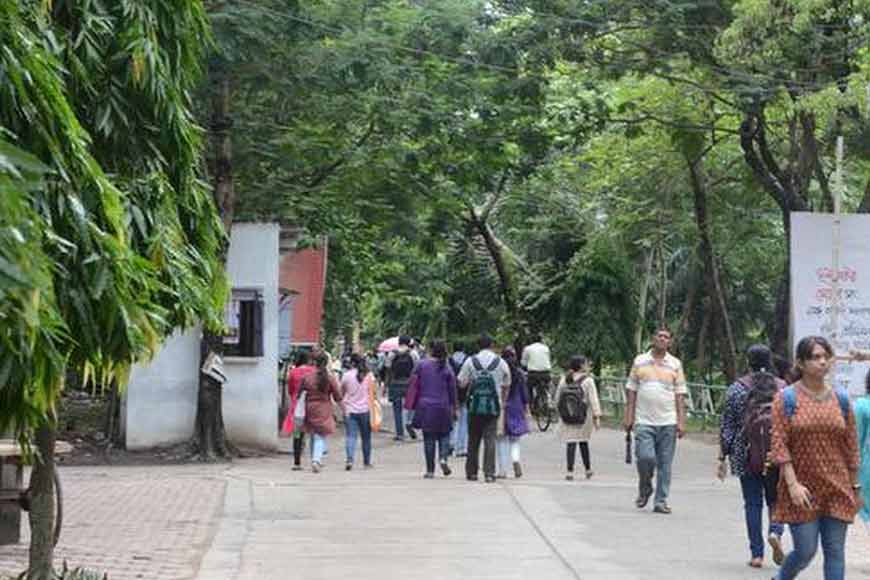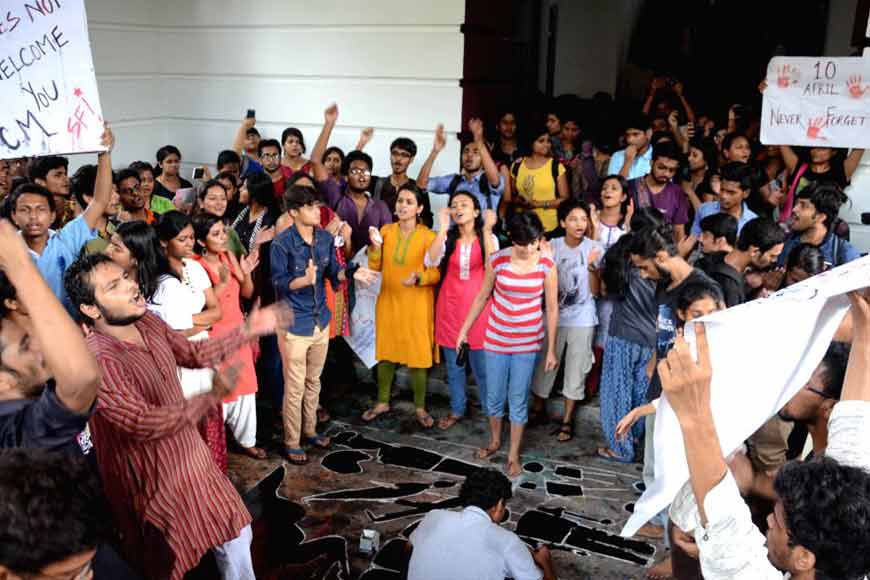Naxalbari, students today, and Communism in Covid times

All socio-political movements of substance tend to leave their imprint on the public mind. Sometimes, the imprint is clear and definable, while at other times, it is absorbed into the thoughts and mores of contemporary society. It has been nearly 53 years since the Naxalbari Movement. In that context, a strange thought comes up – there was a time when, answering Mahatma Gandhi’s call, thousands of the country’s brightest young students abandoned academics and joined politics, in service of the nation.
Two decades after Independence, answering a similar call from Charu Majumdar – ideologically and politically the polar opposite of Gandhi – several thousand bright young minds once again abandoned academics and signed up for the ‘revolution’. A revolution that never came. Was perhaps never destined to. Nonetheless, the Naxalbari Movement exerted its influence over the music, poetry, stories, novels, essays, sociological research, journalism, and even government policy, of the 1980s and 90s.
Does the movement still retain its influence? Are young Bengali students today directly affected by its ideology? In the times of Corona, these are the questions that this account attempts to answer.
As part of my fact-finding mission, I spoke to a few professors, who were of the opinion that while some meritorious young people might make individual efforts, we will not see a repeat of 1967. No matter who gives the call, students will not give up their studies, their homes, and go off to the villages. And the predominant reason is the current generation’s lack of faith in violence. Many of those who say this are ‘Leftists’. Yet, just as some among them describe themselves as Leninist or Marxist, so others avoid labelling themselves, but profess faith in equality, want a society free of corruption, try and protest against injustice, and believe in an inclusive society that has room for, among others, the LGBTQ community. Their number is not inconsiderable. Neither do they have faith in established politicians, nor are they interested in joining active politics themselves.

While the antipathy for violence among Left-oriented students is one side of the coin, the other is their unwillingness to associate directly with any of the student unions run by Leftist parties. They may stand against deprivation and injustice, but appear not to think too deeply about societal reform or change. Neither to they seem to possess a clear idea of what this change might look like. A possible reason for this could be the fall of the Soviet Union, and a general disinterest in a socialist system devoid of democratic rights. The likes of the ludicrous Communist leader of North Korea, or China’s dictatorial, so-called Socialism, perhaps justify this lack of interest among students of a modern mindset.
From Khudiram Bose, to B.T. Ranadive, right up to Charu Majumdar, we have seen the use of political violence, ostensibly as the fallout of a desire to improve humanity, and benefit society. Indeed, this is one of the most significant chapters in the history of the Indian and Bengali middle class. There’s something we often forget here. Aurobindo Ghosh may have gone to prison as a result of his violent efforts to gain freedom for India, but he came back to become Rishi Aurobindo. And he was one among many hundreds to have undergone this transformation. These people may not have rejected politics, but certainly gave up violence. This was as true of Barin Ghosh and Upendranath Bandyopadhyay as it was true of the Naxalites who were arrested, of whom at least 90 percent (perhaps more), came back from prison and continued as Leftists, but shunned violence.
The likes of Charu Majumdar and Saroj Dutta died in police custody, but Kanu Sanyal, Jangal Saontal, Saibal Mitra, Santosh Rana and innumerable other Naxalite leaders and activists come to mind, whose lives after prison were never devoid of politics, but demonstrated a clear lack of faith in violent activism.
However, even as ideologically Left-oriented young people display the increasing impact of ‘Gandhian thought’, one notices an intense effort on the part of the Right wing (among them quite a few students) to promote violence. A recent incident is relevant in this context. All day on October 2, the birth anniversary of Mahatma Gandhi, Twitter was resonant with the exultation of supporters of the man who killed him. The phrase ‘Nathuram Godse zindabad’ made quite a few appearances. This almost exactly echoed the celebrations that Sardar Vallabh Bhai Patel had written to Nehru about, on January 30, 1948, the day Gandhi was killed. In his letter, Patel had described how the anti-freedom struggle Hindutva organization RSS had distributed sweets at every street corner as news of Gandhi’s death spread, an observation also made by the then District Magistrate of Murshidabad, Annada Shankar Roy, in his book ‘Juktobonger Smriti’.
Also read : WATERSHED MOMENT FOR BENGAL POLITICS-JULY21
This year, 72 years after his death, the celebratory roar was unmistakable. A flood of tweets eulogizing Godse was unleashed from early morning onward, and a constant stream of tweets with the hashtag #nathuramgodsezindabad began appearing from 5.00 a.m. By afternoon, tweets about Godse had crossed the 80,000 mark. Such a hashtag could not have been created without prior preparation, and many of the profiles which tweeted about Godse were seen to be declared supporters of both the BJP and Hindutva. Ultra Hindutvavadis and the RSS have always considered Godse a true patriot, but their non-participation in the freedom movement and Gandhi’s assassination had driven them into a corner nationwide. The power that the extreme right wing now enjoys in India was never theirs earlier, and ‘Godse zindabad’ was not a slogan they could raise without fear. The increase in Lok Sabha seats has caused a concurrent increase in courage, too.
Neither student politics, nor national politics are created out of thin air. The link to global politics is forever present.
Can it thus be said that Left-minded young people are now anti-violence, but Right-wing youngsters consider violence essential as a political weapon? Perhaps not as baldly, but it is clear that those who chant ‘Godse zindabad’, or feel no shame at the death of more than 1,000 minorities in Gujarat 2002, believe in the use of controlled violence where necessary. Is India changing as a nation? Too early to say. The country has 89 crore (8.9 billion) voters. The party whose supporters consider Godse a patriot received a total of 23 crore of those votes in the last Lok Sabha.

Neither student politics, nor national politics are created out of thin air. The link to global politics is forever present. In today’s Covid-infested world, it might be instructive to observe the course of world politics. In the recent New Zealand elections, Jacinda Ardern’s Labour Party returned to power with 64 Left-leaning members of Parliament, of whom 10 percent represent the lesbian, gay, bisexual, transgender, and Aboriginal communities. The team also includes MPs of African, Sri Lankan and Mexican origin, and more than half of those 64 members are women. At a time when global superpowers are grappling with the majoritarian, populist politics of exclusion, banishment, and the revoking of citizenship, this small country in one corner of the world sang a song of inclusion and acceptance.
One other noticeable global fact has been this – while small Communist nations such as Laos, Vietnam, and Cuba have displayed exemplary efficiency in dealing with the Covid pandemic, populist leaders such as Donald Trump in the USA, Vladimir Putin in Russia, Narendra Modi in India, Jair Bolsonaro in Brazil, and Boris Johnson in the UK have done very few things right while trying to frame a coherent Covid policy in their respective nations. Given the international perspective, is there a chance that nations may be attracted afresh to a Left-leaning ideology? Is there room for renewed acceptance? The signs seem to be subtly be pointing in that direction, and if such a shift does come about, the role played by the young, Left-leaning populace will be considerable. Having said that, the gap between the present times, and the possibility of this new reality, while not unbridgeable, is still vast.
Disclaimer: The views expressed in this article are independent views solely of the author(s) expressed in their private capacity and do not in any way represent or reflect the views of getbengal.com










